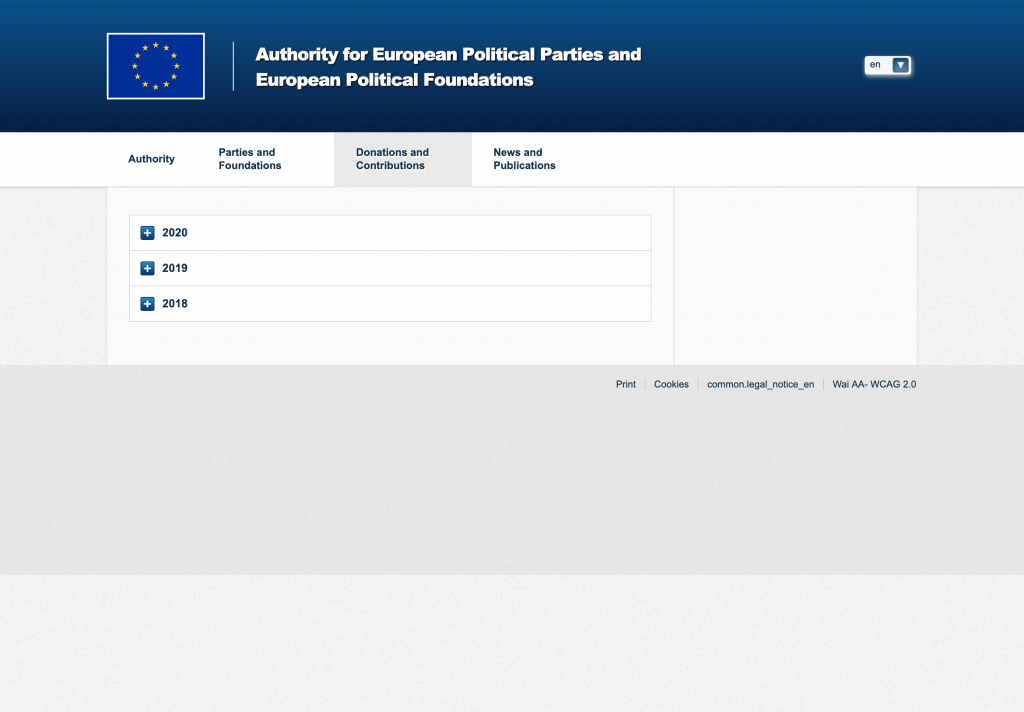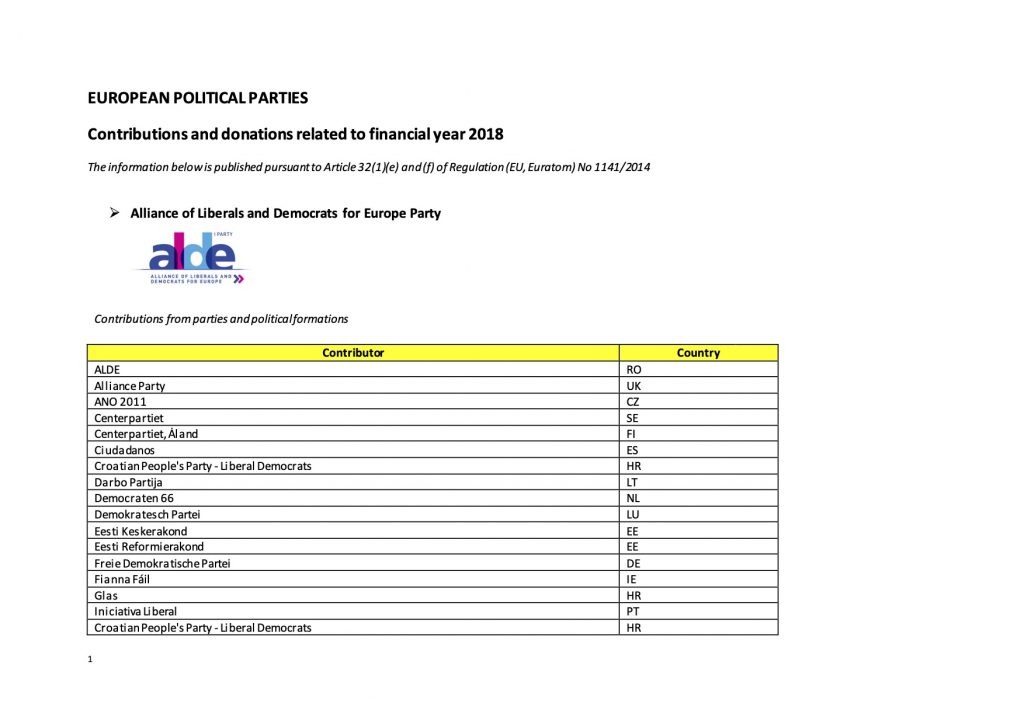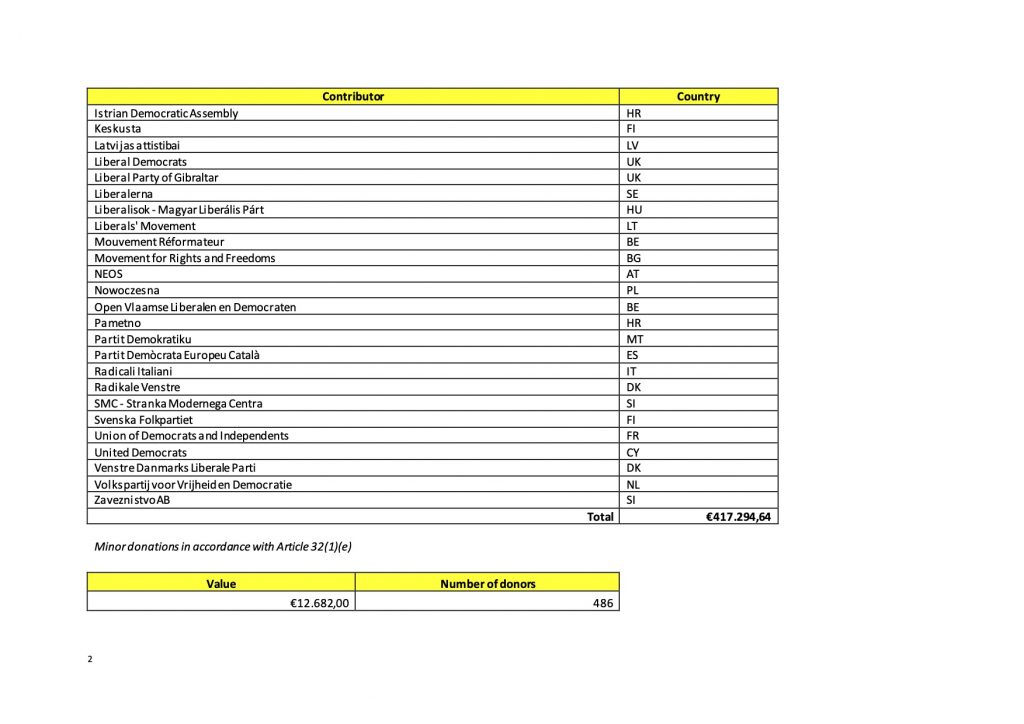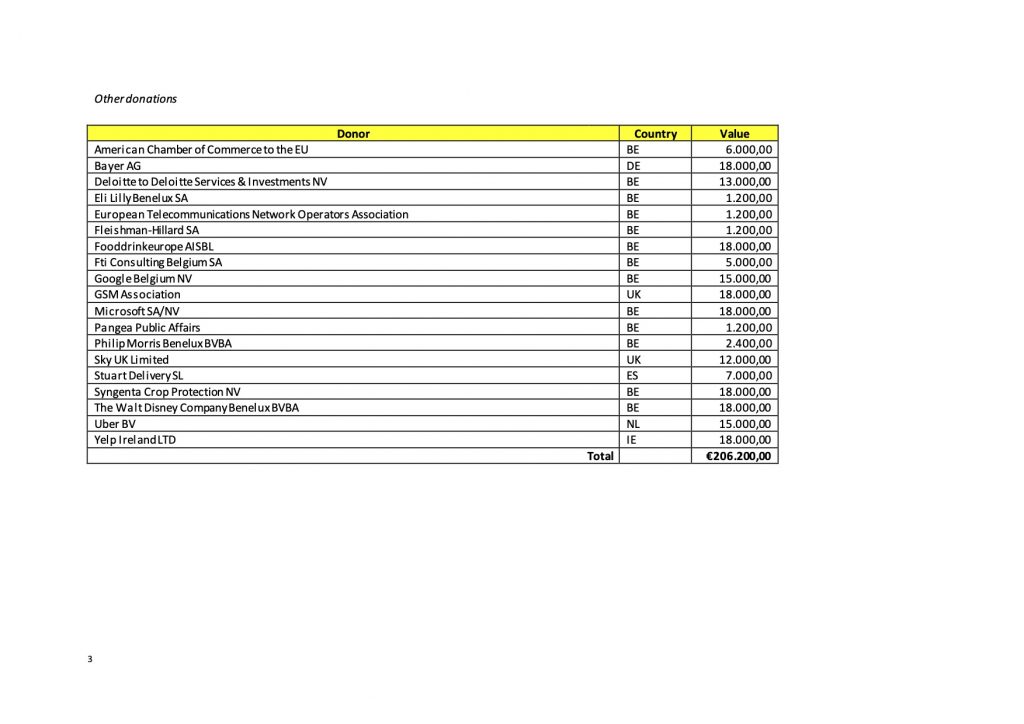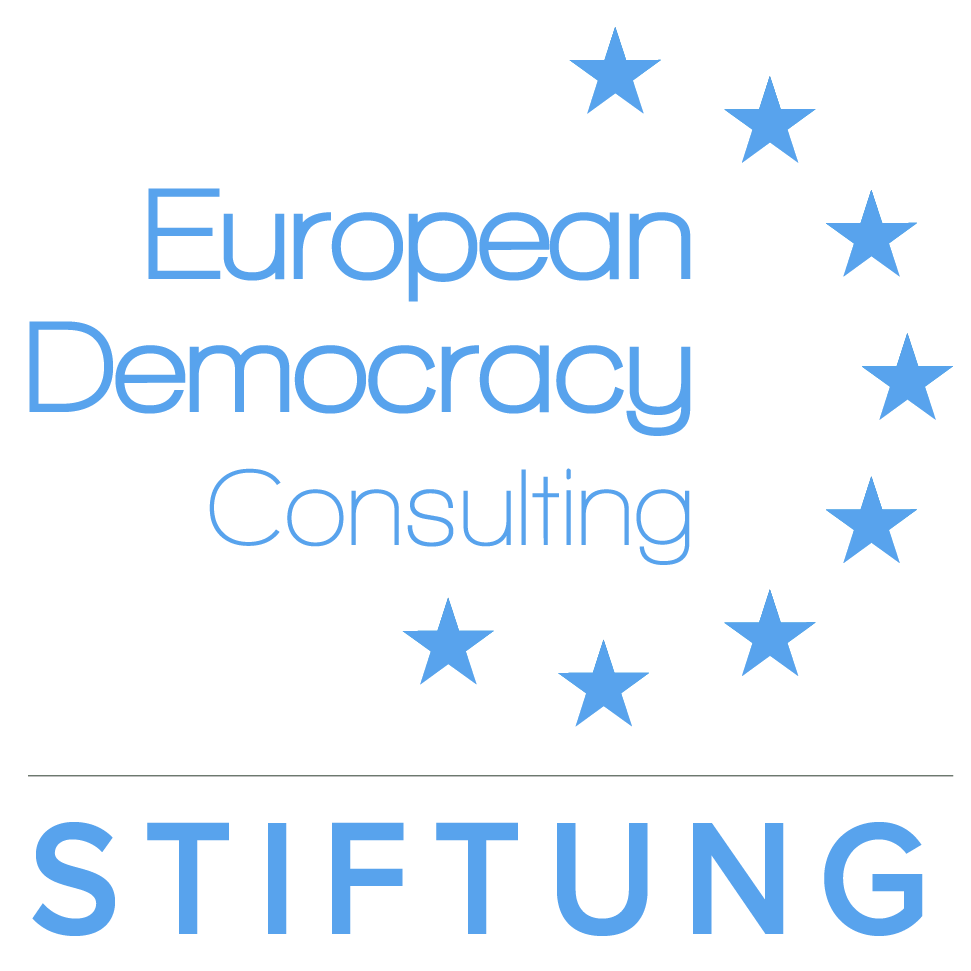Donations and contributions are essential parts of political parties’ private funding. In the absence of initiatives by the Authority for European Political Parties to provide European citizens with properly visible financial information on their European parties, European Democracy Consulting is stepping in; we’ve got you covered!
Reporting donations and contributions
Politics costs money. As a consequence, European political parties, like all other political parties regardless of the level at which they operate, need money from donations and contributions for their activities. Since 2004, the European Union has been providing public funding to European parties to support their activities, in addition to their private fundraising. The current public funding scheme is detailed in Regulation 1141/2014.
Regulation 1141/2014 also set up the Authority for European Political Parties and European Political Foundations (APPF). Owing to Article 32 of the Regulation, the APPF is mandated to publish the donations and contributions received by European political parties. Long story short, “contributions” are payments made by party members, while “donations” are payments made by anyone else, including companies and individuals.1
More specifically, Article 32(1)(e) and (f) require the publication of:
(e) the names of donors and their corresponding donations reported by European political parties and European political foundations in accordance with Article 20(2), (3) and (4), with the exception of donations from natural persons the value of which does not exceed EUR 1 500 per year and per donor, which shall be reported as ‘minor donations’. Donations from natural persons the annual value of which exceeds EUR 1500 and is below or equal to EUR 3000 shall not be published without the corresponding donor’s prior written consent to their publication. If no such prior consent has been given, such donations shall be reported as ‘minor donations’. The total amount of minor donations and the number of donors per calendar year shall also be published; (emphasis added)
(f) the contributions referred to in Article 20(7) and (8) and reported by European political parties and European political foundations in accordance with Article 20(2), including the identity of the member parties or organisations which made those contributions;
So, annual donations from legal persons and donations from natural persons above €3,000 are always published with the name of the donor and the corresponding amount, donations from natural persons below €1,500 are grouped as minor donations, and donations from natural persons between €1,500 and €3,000 are published with the name of the donor and their amount if the donor agrees, and as minor donations otherwise.
Visualising donations and contributions
The shortcomings of the APPF in the implementation of its transparency obligations were already the subject of a complaint to the European Ombudsman against the APPF by European Democracy Consulting. The arguments can be found here.
Beyond the timing of these publications,2 one of the most evident and avoidable of these shortcomings is the complete absence of visibility of the information that the APPF publishes. Below is the layout of the page of the APPF’s website providing financial information on European parties (left) and the same page after manually opening the available menus (right).
Financial information is only provided in PDF format, not in open and machine-readable formats, and the PDF documents themselves do not provide any year-to-year comparisons, comparisons between parties, or contextual information — just plain tables. Below are the first three pages of the 2018 APPF reporting on donations and contributions to European parties.
Neither the website nor the reporting files show any attempt by the APPF to ensure, not just the publication, but the visibility and comprehensibility of financial information regarding European political parties. This is detrimental to citizens’ understanding of their parties and of their funding.
As a result, European Democracy Consulting has decided to remedy this shortcoming and endeavoured to provide citizens with relevant visualisations.3
These include the breakdown of parties’ private income between contributions from member parties, identified donations and minor donations (in total amounts and percentages), the evolution of these amounts between 2018 and 2019 (in total amounts, differences, and difference percentages), and a comparison between European parties’ private and public funding. The related dataset can be found here.4
#0B5CBF;">Key figures
|
#0B5CBF;">Key figures
|
#0B5CBF;">Key figures
|
- Contributions from individual members of European political parties (including their membership fees) seem to fall through a loophole. Article 32(1)(f) requires the publication of contributions referred to in Article 20(7) (“Contributions to a European political party from its members”, so presumably from both legal and natural persons), but “reported in accordance with Article 20(2)”. Article 20(2), for its part, requires European parties to “transmit a list of all donors with their corresponding donations” and says that this requirement “shall also apply to contributions made by member parties of European political parties”. As a result, the APPF must publish all the contributions transmitted to it by European parties, which they can receive them from both legal and natural persons, but only need to transmit the ones from its member parties, despite also transmitting its donations down to the smallest ones. It is unclear whether this situation is intentional; it also seems to go against established practice, since European parties fill in a template which explicitly has a field to transmit to the APPF its amount of contributions received from individual members.
- The PDF files for the 2018 and 2019 APPF reporting on donations and contributions are dated 9 and 10 February 2021, despite European parties being under the obligation to provide the APPF with this information at the latest six months following the end of the financial year — therefore 30 June 2019 and 30 June 2020.
- For reference purposes, we would like to indicate that the entire time dedicated to this work — including data collection, data analysis, visualisation design, and website editing — was around 5-6 hours.
- Sources:
– APPF webpage dedicated to donations and contributions: http://www.appf.europa.eu/appf/en/donations-and-contributions.html.
– Amounts of public funding for European parties provided by the European Parliament: https://www.europarl.europa.eu/contracts-and-grants/files/political-parties-and-foundations/european-political-parties/en-funding-amounts-parties-2021.pdf - Or donations from natural person between €1,500 and €3,000 for which the donor has consented to their identification.
- Donations from natural persons, under €1,500, or between €1,500 and €3,000 for which the donor has not consented to their identification.

